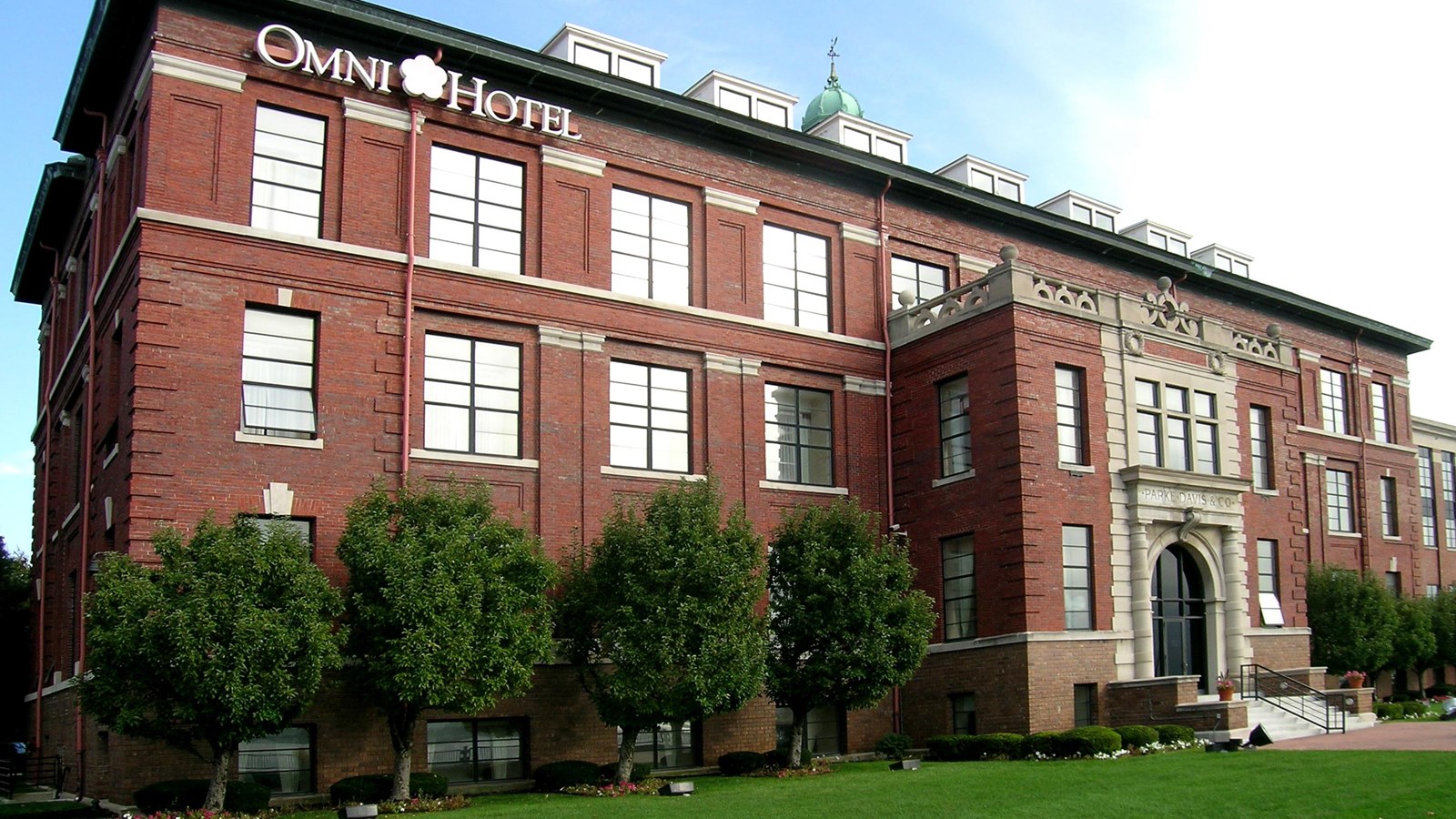Last updated: August 6, 2021
Place
Parke-Davis and Company Pharmaceutical Plant

Photo by Andrew Jameson, CC BY-SA 3.0, https://commons.wikimedia.org/w/index.php?curid=4872393
While Detroit, MI is known as the “Motor City,” not every influential Detroit business has revolved around the automobile industry. Before the first car rolled out of a local factory, the Parke-Davis and Company Pharmaceutical Plant was home to one of the most important pharmaceutical firms in America. Parke-Davis introduced new methods for producing drugs, such as a technique for standardizing doses, and discovered medicines that included the first treatments for diphtheria and epilepsy. Diphtheria is caused by a bacterial infection and results in a sore throat, fever, and blockage of the airway due to inflammation of the lymph nodes. Epilepsy, a neurological disorder, causes seizures and other medical issues. These diseases were even more serious before the development of vaccines in the late nineteenth century.
Operating a small drug store in Detroit in 1860, doctor and pharmacist Samuel P. Duffield partnered with Hervey Coke Parke and George S. Davis to expand his business. Duffield retired shortly after, but Parke and Davis went on to establish a company that became one of the world’s largest sellers of Pharmaceuticals. In the 1870s, Parke and Davis established their business on Joseph Campau Street along the banks of Detroit River to take advantage of convenient transportation provided by water rail.
Parke-Davis flourished at the turn of the century. Between 1891 and 1955 the company built 26 buildings in Detroit that still stand, including the 1902 pharmaceutical research laboratory. This was the first structure designed for that purpose in the United States.
Parke-Davis also hired a number of talented doctors and chemists. Organizing excursions to Central and South America in search of medicinal plants, the company needed a talented team of workers to innovate new medicines and remedies. Dr. Andrew Lyons, for example, consulted with Parke-Davis in the 1880s and brought his skills in chemistry and botany. Born to missionaries in Hawai‘i, Lyons was fascinated by the medicinal power of plants. In the 1950s, notable scientist Dr. Jonas Salk worked at Parke-Davis. He is famous for developing one of the first successful polio vaccines. Due to their efforts, these workers helped make Parke-Davis a successful and innovative pharmaceutical company.
In 1982 Parke-Davis sold its property to a real estate developer. Today the complex, now known as River Place, has been converted into offices, retail space, residences, and a hotel.
The Parke-Davis Research Laboratory and Company Plant is located at Joseph Campau St. along the banks of the Detroit River. The laboratory is a National Historic Landmark
Discover more history and culture by visiting the Detroit travel itinerary.
Sources:
Leake, Paul. History of Detroit: A Chronicle of Its Progress, Its Industries, Its Institutions, and the People of the Fair City of the Straits, Volume 2. Chicago: Lewis Publishing Co., 1912.
Farmer, Silas. The History of Detroit and Michigan. Detroit: S. Farmer & Company 1884.
Poremba, David Lee. Detroit: A Motor City History. Charleston: Arcadia Publishing, 2003.
The content for this article was researched and written by Dr. Katherine Crawford-Lackey.
